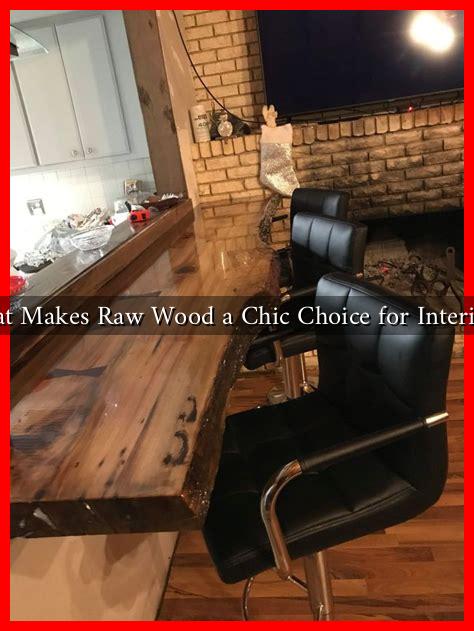-
Table of Contents
What Makes Raw Wood a Chic Choice for Interiors?
In recent years, raw wood has emerged as a popular choice for interior design, captivating homeowners and designers alike with its natural beauty and versatility. This trend reflects a broader movement towards sustainability and a desire for authentic materials that bring warmth and character to living spaces. But what exactly makes raw wood such a chic choice for interiors? In this article, we will explore the aesthetic, environmental, and practical benefits of incorporating raw wood into your home.
The Aesthetic Appeal of Raw Wood
Raw wood offers a unique aesthetic that can enhance the overall look and feel of any interior space. Its organic textures and natural variations create a sense of warmth and comfort that is often missing in more manufactured materials. Here are some key aesthetic benefits:
- Natural Beauty: Each piece of raw wood is unique, showcasing its own grain patterns, knots, and color variations. This individuality adds character to furniture and decor.
- Versatility: Raw wood can complement a variety of design styles, from rustic and farmhouse to modern and minimalist. It can be used in furniture, flooring, wall treatments, and decorative accents.
- Timelessness: Wood has been a staple in interior design for centuries. Its timeless appeal ensures that it remains stylish regardless of changing trends.
Environmental Benefits of Raw Wood
As sustainability becomes increasingly important in design choices, raw wood stands out as an eco-friendly option. Here are some environmental benefits:
- Renewable Resource: Wood is a renewable resource, especially when sourced from sustainably managed forests. This makes it a more environmentally friendly choice compared to synthetic materials.
- Carbon Sequestration: Trees absorb carbon dioxide as they grow, and using wood in interiors helps to store that carbon, reducing overall greenhouse gas emissions.
- Biodegradability: Unlike plastic and other synthetic materials, wood is biodegradable, meaning it won’t contribute to landfill waste when it reaches the end of its life cycle.
Practical Benefits of Raw Wood
Beyond its aesthetic and environmental advantages, raw wood also offers practical benefits that make it a smart choice for interiors:
- Durability: When properly treated and maintained, raw wood can be incredibly durable, standing the test of time and wear.
- Insulation Properties: Wood has natural insulating properties, helping to regulate temperature and improve energy efficiency in homes.
- Easy to Customize: Raw wood can be easily stained, painted, or finished to match any design scheme, allowing for endless customization options.
Case Studies: Successful Use of Raw Wood in Interiors
Several designers and homeowners have successfully incorporated raw wood into their interiors, showcasing its versatility and appeal. For instance:
- The Modern Cabin: A recent project featured a cabin in the woods where raw wood was used for both structural elements and interior finishes. The result was a harmonious blend of nature and modern design.
- Urban Loft: In a city loft, reclaimed wood beams were left exposed, adding character and warmth to an otherwise industrial space. This choice not only enhanced the aesthetic but also contributed to the building’s sustainability.
For more inspiration on using raw wood in your interiors, check out [Houzz](https://www.houzz.com) for a plethora of design ideas and case studies.
Conclusion
Raw wood is more than just a design trend; it is a chic choice that combines aesthetic appeal, environmental responsibility, and practical benefits. Its unique beauty and versatility make it suitable for a wide range of interior styles, while its sustainability credentials resonate with the growing demand for eco-friendly materials. As homeowners and designers continue to seek authentic and meaningful materials, raw wood is poised to remain a favored choice in interior design for years to come. By embracing raw wood, you not only enhance the beauty of your space but also contribute to a more sustainable future.


